Bullet journaling is a simple, flexible way to manage your time and tasks effectively. It combines planning, tracking, and creativity in one system. Here’s how you can use it to stay organized and boost productivity:
Essential tools include a dotted notebook, fine-liner pens, and optional decorative items like washi tape and stickers. Keep your journal practical, not perfect, and adjust your system as needed. The goal is to create a habit that helps you stay on track without added stress.
This article explains how to set up your bullet journal, create daily schedules, and balance functionality with creativity.
A bullet journal, created by Ryder Carroll, combines your to-do list, planner, and diary into one tool. You can customize it to fit your needs, whether you’re tracking daily tasks, appointments, long-term goals, or habits.
A bullet journal stays organized with three main elements:
Symbols and Signifiers
Symbols help categorize entries for quick reference:
| Symbol | Meaning | Usage |
|---|---|---|
| • | Task | Regular to-do items |
| ○ | Event | Scheduled appointments |
| – | Note | Important information |
| → | Migrated | Task moved to the future |
| × | Completed | Finished tasks |
Key Page
Place this at the front for easy reference. Start with a simple setup and add more as you go.
Basic Layouts
Your bullet journal should make your life easier, not harder. Focus on keeping it practical, not perfect. Once you’ve got these basics down, you’ll have a personalized system to manage your time effectively.
A well-organized daily layout combines a task list with time-blocking. By splitting your page into sections for tasks and a schedule grid, you can clearly see what needs to be done and when to tackle each item.
Here’s a simple structure to try:
| Time Block | Purpose | Example Elements |
|---|---|---|
| Morning Review | Planning | Daily goals, priority tasks, schedule overview |
| Focus Blocks | Deep Work | 2-3 hour chunks for top-priority tasks |
| Buffer Zones | Flexibility | Short breaks or handling unexpected tasks |
| Evening Review | Reflection | Reviewing the day, moving tasks, next-day prep |
To make your layout more engaging, use stickers or washi tape to emphasize key tasks or time blocks.
After setting up your layout, focus on identifying which tasks need your immediate attention. Break tasks into categories like urgent, important, and low-priority. A marking system, such as colored dots, works well for this. For example, the Eisenhower Matrix is a helpful method for sorting tasks by urgency and importance.
Stick to simple symbols like dots or icons to keep your page clean and easy to read.
Visual tools can help you monitor how you’re spending your time and how projects are moving along. Use time logs, progress bars, or color-coded sections to track task duration, project milestones, or even your most productive hours.
Functional stickers, like checklists or progress trackers, can add both style and practicality. These tools not only keep things organized but also help you stay motivated while managing your time effectively.
Getting started with bullet journaling? It all begins with reliable tools. Fine-liner pens like Sakura Micron and Faber-Castell Pitt Artist Pens are great choices for precision and durability [1].
Here’s a simple breakdown of what you’ll need:
| Tool Category | Examples | Purpose |
|---|---|---|
| Writing Tools | Fine-liner pens, Colored markers | For tasks, headers, and color coding |
| Layout Tools | Ruler, Scissors | To create grids and trim materials |
| Decorative Items | Washi tape, Basic stickers | Highlight sections and add flair |
| Paper Products | Dotted notebook (e.g., Leuchtturm1917) | Your main journaling canvas |
When choosing a notebook, go for one with thick, high-quality paper to avoid ink bleeding or ghosting. The Paperage Dotted Notebook is a budget-friendly option that doesn’t compromise on quality [3].
Once your essentials are in place, you can make your journal even more engaging with motivational stickers.
Stickers aren’t just for decoration – they can help you stay organized and inspired. Dark Moon Paper offers stunning collections like Lilac Dusk and Electric Forest that bring creativity to your pages. Their functional sticker sets include checklists, dots, and trackers, making them perfect for daily planning.
Here are some ways to use stickers effectively:
The trick is to strike a balance. While stickers can make your journal visually appealing, they should support – not distract from – your productivity system [3].
Place your journal somewhere easy to spot – like near your coffee maker or on your nightstand – to make daily use a no-brainer [3]. The goal is to make journaling feel like a natural part of your day, not a chore.
Here’s a simple guide for effective journaling times:
| Time | Activity | Purpose |
|---|---|---|
| Morning | Review tasks | Set priorities |
| Midday | Update progress | Refocus |
| Evening | Plan next day | Reduce stress |
A straightforward daily log often works better than intricate weekly layouts when building a habit [3]. Start small – focus on tasks and appointments – and expand with trackers or extras as your routine strengthens.
Once journaling becomes second nature, customize it to match your preferences and lifestyle.
Forget overly complex layouts you see on social media. Stick to what helps you stay productive. If you’re a visual thinker, try using simple icons or a color-coding system to organize tasks quickly and clearly [1][2].
You can also add a personal touch with themed stickers like ‘Lilac Dusk’ that combine style with functionality, such as headers or trackers. Your journal should work for you, not stress you out. Skipped a day? No problem – just pick up where you left off without worrying about blank pages [4][2].
Boost your motivation by:
Keep your design clean and focused. A well-organized journal isn’t just a tool – it’s your visual reminder to stay on track [1][2].
A bullet journal should first and foremost help you stay organized, but that doesn’t mean it can’t look great too. Start with a clear grid layout to keep your pages structured. Choosing a consistent color palette can make your journal visually appealing without compromising clarity [1].
Here are some ideas for adding decorative touches:
| Element | How to Use It |
|---|---|
| Headers | Use simple lettering for clarity |
| Task Lists | Stick to clean bullets with minimal highlighting |
| Margins | Add small doodles away from main content |
| Trackers | Use basic shapes and purposeful colors |
Adding small decorations in page corners or along the margins can enhance the look without interfering with your planning. This way, your bullet journal stays functional while allowing room for creative expression [4].
Inspiration can take your bullet journal to the next level, making it both practical and visually pleasing. Products like Dark Moon Paper’s themed sticker kits – such as Lilac Dusk or Winter Hygge – offer quick ways to enhance your journal’s style while matching your planning system.
Consider these tips for purposeful design:
Stick to a grid layout to keep even the busiest schedules neat and easy to follow [1][2]. Leaving white space on the page prevents it from feeling cluttered, helping you focus on your plans. By balancing creativity with practicality, your bullet journal can remain an effective tool for managing your time [4][2].
Bullet journaling helps you manage your time by blending structure with creativity. It’s a system that turns daily planning into a productive and enjoyable habit.
Start with simple layouts that highlight your key tasks and time blocks. As you get comfortable, you can include trackers and symbols to keep an eye on your progress. This keeps your journal practical and easy to maintain.
What makes bullet journaling effective is how customizable it is. Your journal should match your personal style while staying functional. Whether you prefer clean, minimal designs or more artistic spreads, the best system is the one you’ll stick with consistently [1][2].
Here are a few tips to make the most of your journal:
Bullet journaling works well alongside other planning methods and encourages gradual improvement [3]. The key is consistency – stick to layouts that work for you, focus on your priorities, and tweak your system as needed.
Stickers Made for Planning
Our custom stickers are a fuss-free way to brighten up your planner pages with perfectly-sized designs that add a spark of personality to every layout.
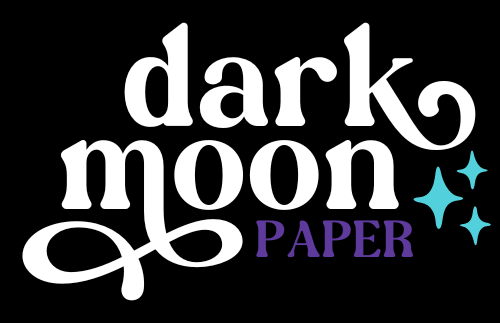
Why use planner stickers?
Planner stickers make organizing easy, fun, and personal! Add color, creativity, and structure to every page, transforming your planner into a tool that reflects you. Perfect for tracking, decorating, and staying inspired daily!
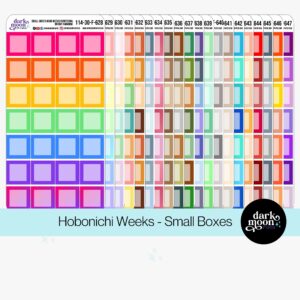
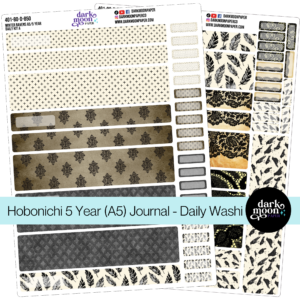
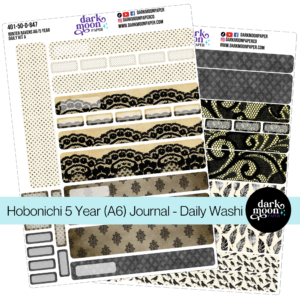
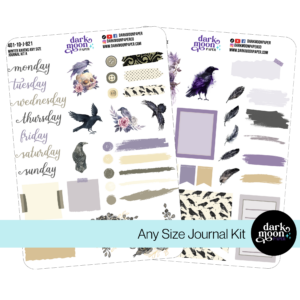
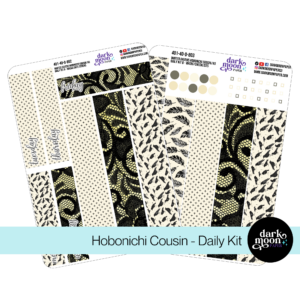
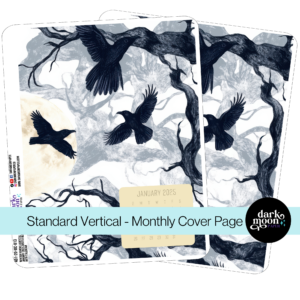
Hello and welcome!
I’m Rachael Snow, a lifelong artist and entrepreneur, and I started Dark Moon Paper to blend my love of art, technology, and the mysterious beauty of the world around us. My sticker kits are meant to set the mood, tell a story, and give you a little escape from the ordinary.
I work from my cozy studio tucked away in the beautiful woods of Oregon, surrounded by nature and a dark night sky full of stars.